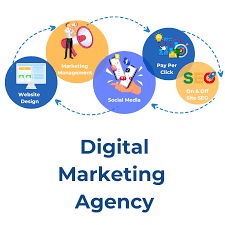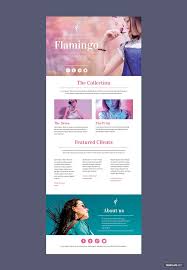Email SEO: Boosting Your Email Marketing Efforts with Search Engine Optimization
In today’s digital landscape, search engine optimization (SEO) is a key strategy for improving online visibility and driving organic traffic to websites. However, did you know that SEO can also be applied to your email marketing campaigns? That’s right – by incorporating SEO techniques into your emails, you can enhance their effectiveness and reach a wider audience. In this article, we will explore the concept of email SEO and provide you with some valuable tips to optimize your email marketing efforts.
- Craft Compelling Subject Lines: Just like meta titles in SEO, subject lines play a crucial role in determining the open rates of your emails. To optimize them for search engines, include relevant keywords that align with your content and are likely to be searched by your target audience. However, remember to keep them concise, engaging, and compelling.
- Optimize Email Content: When writing the body of your email, focus on creating high-quality content that is valuable and relevant to your subscribers. Incorporate keywords naturally throughout the text while maintaining readability and coherence. Avoid keyword stuffing as it may negatively impact both user experience and deliverability.
- Use Alt Text for Images: Including images in your emails can make them more visually appealing and engaging for recipients. However, search engines cannot read images directly; they rely on alt text descriptions to understand their content. By using descriptive alt text for your images, you can improve accessibility for visually impaired users and potentially rank higher in image searches.
- Mobile-Friendly Design: With the majority of emails being opened on mobile devices, it is essential to ensure that your email template is mobile-responsive. A responsive design not only enhances the user experience but also improves search engine rankings as Google prioritizes mobile-friendly websites.
- Maintain a Healthy Email List: A clean and engaged email list is crucial for successful email marketing campaigns. Regularly clean out inactive subscribers, as high bounce rates and low engagement can negatively impact your sender reputation. This, in turn, may affect your email deliverability and search engine rankings.
- Encourage Social Sharing: Social signals play a role in SEO, so it’s beneficial to encourage your email recipients to share your content on social media platforms. Include social sharing buttons in your emails to make it easy for readers to spread the word. Increased social engagement can lead to more visibility and potential backlinks, indirectly boosting your search engine rankings.
- Monitor Email Metrics: Just as you would track website analytics for SEO purposes, monitoring email metrics is essential for optimizing your campaigns. Pay attention to metrics such as open rates, click-through rates, and conversions. Analyzing this data can help you identify areas for improvement and refine your email marketing strategy over time.
Incorporating SEO techniques into your email marketing strategy can significantly enhance the visibility and effectiveness of your campaigns. By optimizing subject lines, content, images, design, and maintaining a healthy email list while monitoring key metrics, you can maximize the impact of your emails on both search engines and subscribers. So why not start implementing these strategies today and take your email marketing efforts to new heights?
7 tips about email seo
- Focus on the subject line – Make sure your emails have a clear, concise and keyword-rich subject line that will grab the recipient’s attention.
- Include call-to-action buttons – Use CTAs to drive clicks and encourage readers to take action quickly.
- Optimize for mobile devices – Ensure that your emails are optimized for mobile devices so they can be easily read on any device.
- Personalize content – Use personalization techniques such as using the recipient’s name or location in your email copy to make it more relevant and engaging for them.
- Track & measure performance – Set up tracking mechanisms such as Google Analytics or UTM parameters to measure how many people open, click through, and convert from your emails over time..
- Leverage social media channels – Promote your email campaigns across social media channels like Facebook, Twitter, Instagram etc., to increase visibility and drive more conversions from email subscribers who may not have seen the original message in their inboxes..
- Monitor spam filters – Monitor spam filters regularly to ensure that your emails are being delivered correctly without any issues
Focus on the subject line – Make sure your emails have a clear, concise and keyword-rich subject line that will grab the recipient’s attention.
Focus on the Subject Line: The Key to Captivating Email SEO
When it comes to email marketing, the subject line is your first impression. It’s the gateway to capturing your recipient’s attention and enticing them to open your email. But did you know that the subject line can also impact your email’s search engine optimization (SEO)? By crafting a clear, concise, and keyword-rich subject line, you can enhance both the visibility and click-through rates of your emails.
A compelling subject line should be concise yet informative. With limited characters available, it’s important to make every word count. Clearly convey what your email is about while piquing curiosity or offering value. Avoid vague or misleading subject lines that may lead to disappointment and decrease trust.
Incorporating relevant keywords into your subject line is crucial for email SEO. Think about what terms or phrases your target audience is likely to search for when looking for information related to your email content. By including these keywords in a natural and meaningful way, you increase the chances of your email appearing in search results.
However, striking a balance is key. While it’s important to optimize for search engines, don’t sacrifice clarity or readability for keyword stuffing. Remember that humans are ultimately reading your subject line, so it should make sense and be compelling enough for them to click.
Personalization can also play a role in capturing attention. Consider using dynamic tags that insert the recipient’s name or other personalized information into the subject line. This not only grabs their attention but also helps create a sense of relevance and connection.
Testing different subject lines can provide valuable insights into what resonates with your audience. A/B testing allows you to compare two variations of a subject line to see which performs better in terms of open rates. Experiment with different wording, lengths, or approaches to identify what works best for engaging your subscribers.
In conclusion, focusing on the subject line is an essential aspect of email SEO. By crafting a clear, concise, and keyword-rich subject line, you can increase the visibility of your emails in search results and capture the attention of your recipients. Remember to strike a balance between optimization and readability, and don’t shy away from personalization or testing to refine your approach. With a captivating subject line, you’ll be well on your way to boosting the success of your email marketing campaigns.
Include call-to-action buttons – Use CTAs to drive clicks and encourage readers to take action quickly.
Include Call-to-Action Buttons: Drive Clicks and Encourage Action in Your Emails
When it comes to email marketing, the ultimate goal is to engage your audience and drive them to take action. One effective way to achieve this is by including call-to-action (CTA) buttons in your emails. These buttons serve as visual prompts that encourage readers to click and navigate to a specific landing page or perform a desired action. By incorporating CTAs into your emails, you can boost click-through rates and increase conversions. Here’s why CTAs are essential for email SEO:
- Increased Click-through Rates: CTAs act as signposts that guide recipients towards the next step you want them to take. By using compelling language and placing these buttons strategically within your email content, you can entice readers to click through and explore further. Higher click-through rates not only indicate engagement but also send positive signals to search engines, potentially improving your email’s ranking.
- Clear Direction for Readers: Including CTAs helps eliminate any confusion or ambiguity for your readers. They provide a clear direction on what action you want them to take, whether it’s making a purchase, signing up for a newsletter, or downloading an e-book. By presenting a straightforward path forward, you make it easier for readers to engage with your content and move closer towards conversion.
- Urgency and Scarcity: Well-crafted CTAs can create a sense of urgency or scarcity that motivates readers to act quickly. For example, using phrases like “Limited Time Offer” or “Only 24 Hours Left” can create a fear of missing out (FOMO) effect, prompting immediate action from recipients. This sense of urgency not only drives clicks but also encourages time-sensitive conversions.
- Trackable Performance: CTAs provide valuable data that allows you to measure the success of your email campaigns accurately. By tracking how many clicks each CTA receives, you can gain insights into which offers or messages resonate most with your audience. This data can help you refine your email marketing strategy and optimize future campaigns for better results.
When incorporating CTAs into your emails, keep these best practices in mind:
– Use action-oriented language: Use verbs that inspire action, such as “Shop Now,” “Download,” or “Get Started.”
– Make them visually appealing: Design your CTAs to stand out by using contrasting colors, clear typography, and appropriate sizing.
– Place them strategically: Position your CTAs where they are easily visible and logically flow within the email. Typically, placing them above the fold or at the end of a compelling section is effective.
– Test and optimize: Experiment with different wording, colors, sizes, and placements to find what works best for your audience. A/B testing can help you identify the most effective CTAs for driving clicks and conversions.
Including call-to-action buttons in your emails is a powerful technique that not only improves engagement but also enhances the overall SEO performance of your campaigns. By guiding readers towards taking action quickly and effectively, you can drive more clicks, increase conversions, and ultimately achieve greater success with your email marketing efforts.
Optimize for mobile devices – Ensure that your emails are optimized for mobile devices so they can be easily read on any device.
Optimize for Mobile Devices: Enhance Your Email SEO and Reach a Wider Audience
In today’s fast-paced digital world, mobile devices have become an integral part of our lives. People are constantly connected on their smartphones and tablets, making it crucial for businesses to optimize their emails for mobile devices. By ensuring that your emails are mobile-friendly, you not only improve the user experience but also boost your email SEO and reach a wider audience.
When it comes to email SEO, search engines like Google take into account the mobile-friendliness of websites and emails when determining their rankings. A responsive design that adapts seamlessly to different screen sizes is highly valued by search engines. By optimizing your emails for mobile devices, you increase the chances of ranking higher in search engine results pages (SERPs), ultimately driving more organic traffic to your website.
Moreover, optimizing for mobile devices improves the overall user experience. Emails that are not optimized can appear distorted or difficult to read on smaller screens, leading to frustration and high bounce rates. On the other hand, a well-designed and responsive email ensures that your message is easily readable, visually appealing, and engaging across all devices. This enhances customer satisfaction and encourages recipients to take the desired action.
To optimize your emails for mobile devices effectively, consider these key tips:
- Responsive Design: Use a responsive email template that automatically adjusts its layout based on the screen size of the device being used. This ensures that your content remains visually appealing and easy to navigate regardless of whether it is viewed on a smartphone or tablet.
- Clear Call-to-Action (CTA): Make sure your CTAs are prominently displayed and easy to tap with a finger on smaller touchscreens. Use large buttons or links with clear text that stands out against the background.
- Streamlined Content: Keep your email content concise and focused. Mobile users often have limited attention spans, so make sure your message gets straight to the point. Use bullet points, subheadings, and shorter paragraphs to improve readability.
- Optimized Images: Optimize your images for mobile devices by compressing their file sizes without compromising quality. This helps reduce loading times and ensures a smooth experience for recipients.
By optimizing your emails for mobile devices, you not only enhance the user experience but also improve your email SEO and reach a wider audience. With more people accessing emails on their smartphones and tablets, it is essential to adapt to this trend. So, take the necessary steps to ensure that your emails are mobile-friendly and watch as your engagement rates and search engine rankings soar.
Personalize content – Use personalization techniques such as using the recipient’s name or location in your email copy to make it more relevant and engaging for them.
Boosting Email Engagement with Personalized Content
In the world of email marketing, personalization is a powerful tool that can significantly improve engagement and conversion rates. By tailoring your email content to each recipient’s preferences and characteristics, you can create a more meaningful and engaging experience. One effective way to achieve this is by incorporating personalization techniques, such as using the recipient’s name or location in your email copy.
When a recipient sees their name or location mentioned in an email, it instantly grabs their attention and creates a sense of familiarity. It shows that the message is specifically crafted for them, rather than being a generic mass communication. This personal touch not only captures their interest but also makes them feel valued as an individual customer.
Including the recipient’s name or location in your email copy is relatively simple but highly effective. Most email marketing platforms offer dynamic content features that allow you to insert personalized fields into your emails. By using simple merge tags or placeholders, you can automatically populate these fields with the relevant information from your subscriber database.
Personalization goes beyond simply addressing someone by their name; it extends to tailoring the entire email content based on their interests, past purchases, or browsing behavior. For instance, if you have data indicating that a particular subscriber has shown interest in a specific product category, you can send them targeted emails featuring related products or exclusive offers.
The benefits of personalized content are numerous. Firstly, it enhances the relevance of your emails, making them more likely to resonate with recipients and drive engagement. Secondly, it helps build trust and credibility as customers appreciate receiving tailored recommendations or offers based on their preferences. Finally, personalized emails have higher chances of conversion as they provide a more compelling call-to-action that aligns with individual needs.
However, it’s important to strike a balance when personalizing content. Overusing personalization can come across as intrusive or robotic if not executed thoughtfully. It’s crucial to ensure that personalization is genuine and adds value to the recipient’s experience. Remember to test and analyze the impact of personalization on your email campaigns to find the sweet spot that works best for your audience.
In conclusion, personalizing your email content is a valuable strategy for enhancing engagement and driving conversions. By using techniques such as incorporating the recipient’s name or location in your email copy, you can create a more relevant and engaging experience for your subscribers. Take advantage of the available tools and data at your disposal to deliver personalized emails that truly resonate with your audience.
Track & measure performance – Set up tracking mechanisms such as Google Analytics or UTM parameters to measure how many people open, click through, and convert from your emails over time..
Track & Measure Performance: Unleash the Power of Email SEO with Data Insights
In the realm of email marketing, understanding the success and impact of your campaigns is crucial. That’s where tracking and measuring performance come into play. By setting up tracking mechanisms like Google Analytics or UTM parameters, you can gain valuable insights into how your emails perform over time. Let’s explore why tracking and measuring performance is an essential tip for email SEO.
Firstly, tracking mechanisms allow you to monitor vital metrics such as open rates, click-through rates, and conversions. These metrics provide a comprehensive view of how engaged your audience is with your emails. By analysing this data, you can identify trends, patterns, and areas for improvement in your email campaigns.
For instance, if you notice a decline in open rates, it may be an indication that your subject lines need some tweaking to grab recipients’ attention. On the other hand, if click-through rates are low, it could suggest that your content or call-to-action needs to be more compelling. By identifying these areas for improvement through tracking mechanisms, you can refine and optimize your emails for better performance.
Additionally, tracking mechanisms enable you to measure the impact of your emails on conversions and sales. By integrating Google Analytics or setting up UTM parameters in your email links, you can track the journey of a recipient from opening an email to making a purchase or completing a desired action on your website. This data helps you understand which emails are driving the most conversions and allows you to allocate resources effectively.
Moreover, by consistently monitoring performance metrics over time, you can identify long-term trends and make data-driven decisions for future campaigns. For example, if certain types of content consistently generate high engagement and conversions, you can focus more on creating similar content in the future.
In summary, tracking and measuring performance are essential components of successful email SEO strategies. By implementing tracking mechanisms such as Google Analytics or UTM parameters, you gain valuable insights into how your emails are performing. This data empowers you to make informed decisions, optimize your campaigns, and ultimately achieve better results. So, don’t overlook the power of data – start tracking and measuring the performance of your email marketing efforts today!
Leverage social media channels – Promote your email campaigns across social media channels like Facebook, Twitter, Instagram etc., to increase visibility and drive more conversions from email subscribers who may not have seen the original message in their inboxes..
Leverage Social Media Channels: Boost Your Email SEO and Reach a Wider Audience
In the realm of email marketing, it’s not uncommon for some of your subscribers to miss or overlook your carefully crafted emails in their crowded inboxes. That’s where leveraging social media channels can make a significant difference. By promoting your email campaigns on platforms like Facebook, Twitter, Instagram, and more, you can increase visibility and drive conversions from subscribers who may have missed your original message.
Social media platforms offer a vast audience base and powerful targeting options that can complement your email marketing efforts. Here’s how you can leverage social media channels to enhance your email SEO strategy:
- Cross-Promotion: When you send out an email campaign, consider creating related posts on your social media accounts to generate excitement and interest. Tease the content or offer a snippet of what subscribers can expect in their inboxes. This cross-promotion will pique curiosity and encourage followers to sign up for your emails.
- Visual Appeal: Social media thrives on eye-catching visuals, so create visually appealing graphics or videos that highlight key aspects of your email campaign. This visual content will capture attention as users scroll through their feeds, increasing the chances of them clicking through to read the full email.
- Call-to-Action (CTA): Incorporate clear CTAs in your social media posts that encourage users to subscribe to your mailing list or directly access the content you’re promoting. Make it easy for them to take action by providing clickable links or directing them to a landing page where they can sign up.
- Hashtags and Keywords: Utilize relevant hashtags and keywords in your social media posts to improve discoverability and reach a wider audience interested in topics related to your email campaign. Research popular industry-specific hashtags or keywords that resonate with your target audience.
- Engage with Followers: Actively engage with followers who interact with or share your social media posts. Respond to comments, answer questions, and foster conversations around your email campaign’s content. This not only boosts engagement but also strengthens the connection between your brand and your audience.
- Track Metrics: Just as you monitor email metrics, track social media analytics to measure the impact of your cross-promotion efforts. Pay attention to metrics such as reach, engagement, click-through rates, and conversions. These insights will help you refine your strategy and optimize future campaigns.
By leveraging social media channels to promote your email campaigns, you can increase visibility among subscribers who may have missed your emails in their inboxes. This multi-channel approach not only enhances the reach of your content but also drives more conversions from a wider audience. So don’t miss out on the opportunity to maximize the impact of your email SEO strategy – start integrating social media promotion into your email marketing efforts today!
Monitor spam filters – Monitor spam filters regularly to ensure that your emails are being delivered correctly without any issues
Monitoring Spam Filters: Ensuring Smooth Delivery of Your Email SEO Efforts
When it comes to email SEO, one crucial aspect that often goes unnoticed is monitoring spam filters. Spam filters are designed to protect users from unwanted or malicious emails, but sometimes they can mistakenly flag legitimate emails as spam. This can have a significant impact on your email marketing efforts and hinder your ability to reach your target audience. Therefore, regularly monitoring spam filters is essential to ensure that your emails are being delivered correctly without any issues.
Spam filters use various algorithms and criteria to determine whether an email should be classified as spam or not. These criteria can include factors such as the sender’s reputation, content quality, subject line, and engagement rates. By keeping a close eye on how your emails are being filtered, you can take proactive steps to improve their deliverability and optimize your email SEO strategy.
Here are some tips for effectively monitoring spam filters:
- Test Emails: Regularly send test emails to different email providers and accounts to check if they are being delivered correctly. This will help you identify any potential issues with specific providers or domains.
- Check Spam Folders: Periodically review the spam folders of different email accounts, including popular providers like Gmail, Yahoo, and Outlook. Look for any false positives – legitimate emails that have been marked as spam – and analyze them for common patterns or triggers.
- Analyze Feedback Loops: Many ISPs offer feedback loops that allow you to receive notifications when recipients mark your emails as spam. Take advantage of these feedback loops to identify any recurring issues or complaints from subscribers.
- Monitor Deliverability Metrics: Keep an eye on key deliverability metrics such as bounce rates, complaint rates, and unsubscribe rates. Sudden spikes or consistently poor performance in these areas may indicate problems with your email content or sender reputation.
- Maintain Sender Reputation: Ensure that you follow best practices for maintaining a good sender reputation. This includes using a reputable email service provider, authenticating your emails with SPF, DKIM, and DMARC, and adhering to anti-spam regulations.
By actively monitoring spam filters and addressing any issues promptly, you can enhance the deliverability of your emails and increase the chances of reaching your intended audience. Remember that email SEO goes beyond just crafting compelling content – it also involves ensuring that your emails are seen by the right people at the right time. So, make monitoring spam filters a regular part of your email marketing routine and reap the rewards of improved deliverability and engagement.




